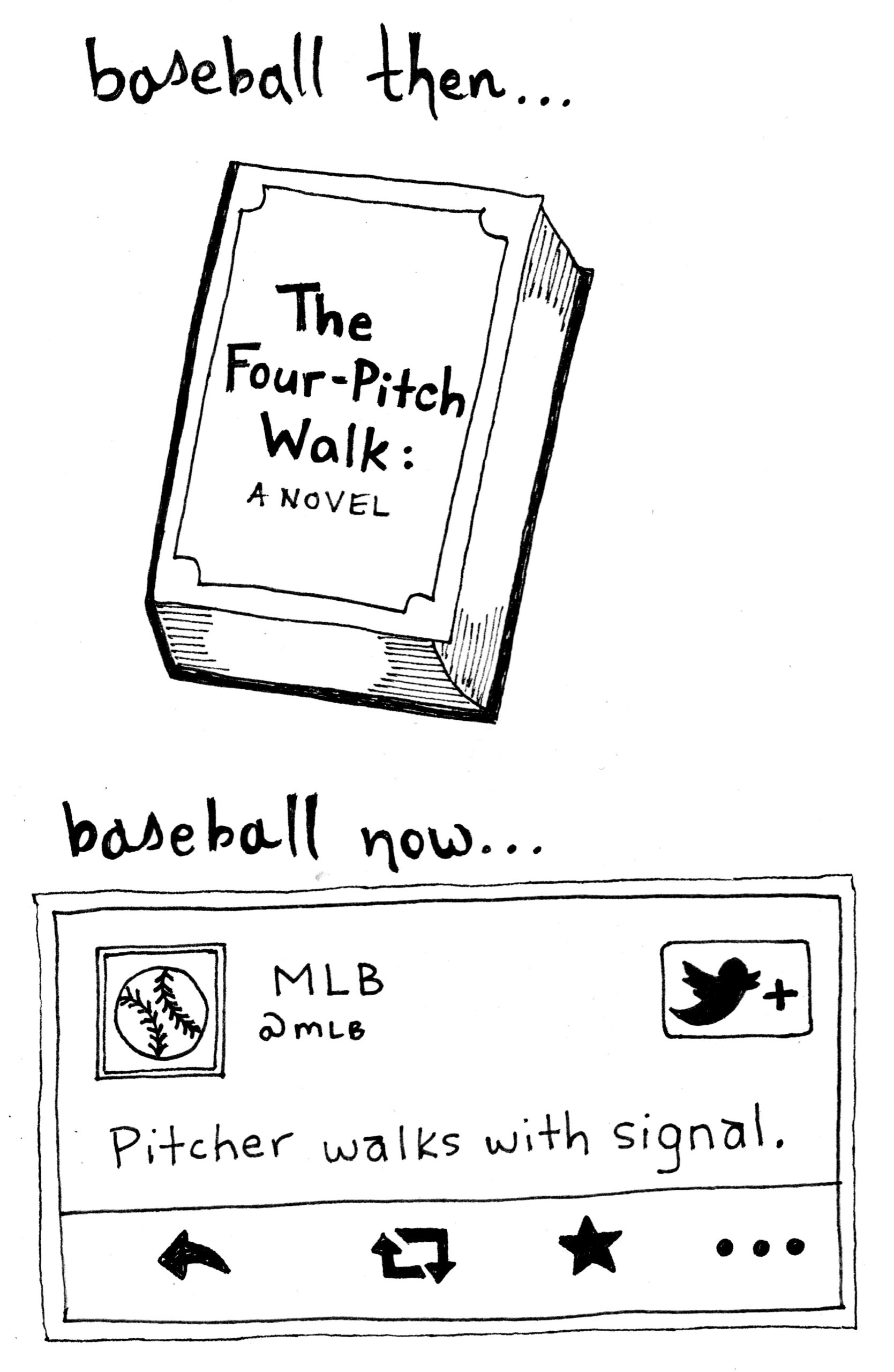MLB rule change reflects our urge for a fast-paced culture
March 3, 2017
 This
piece represents the opinion of the author
.
This
piece represents the opinion of the author
.
Unless you’re a hermit or a Floridian, you know that Brunswick was unseasonably warm last week. The mid-February heatwave made for some confused seasonal activities. I, for one, have never had to circumnavigate mounds of snow in 50-degree weather. But college is a time for new and exciting experiences, after all.
As it happened, the balmy weather coincided with the second-best week of the year, the opening of Major League Baseball (MLB) spring training. (The best week, of course, is the opening week of the regular season in early April.) So while meteorologists might be grumbling about gulfstreams, barometric pressure or global warming (whatever that is), for us, the enlightened ones, the cause of the heatwave was immediately obvious: the universe loves baseball just as much as we do.
This year, however, a stormcloud appeared along the horizon of the otherwise tropical paradise, and it wasn’t simply the impending return to bone-chilling temperatures and snowfall forecasted for next week. As pitchers began to report to their actually warm spring training camps, Major League Baseball announced its plan to deform a historic, cherished and embattled ballpark institution: the intentional walk.
If you have made it to this paragraph despite being part of the 97 percent of students who would rather watch paint dry than see a baseball game, first off, kudos to you. So, trigger warning: baseball talk and boredom may ensue. But please stick around. Secondly, I assume you’re wondering, what the hell is an intentional walk? And more likely, why the hell does it matter?
The intentional walk is a strategic maneuver that a team uses when, for any number of reasons, it wants to avoid pitching to the other team’s man at the plate. Maybe the batter is on a hot streak, or maybe putting one man on first base will create the opportunity for a forceout at third or maybe you deem the next batter an easy out. So instead of actually pitching to the batter, the pitcher will lightly toss four balls to the catcher who has stepped comfortably away from the plate. If this gibberish to you, just understand: it’s sneaky, it’s strategic, and it’s symbolically loaded.
The recent rule change announced by the MLB does not do away with the intentional walk altogether, but now instead of actually throwing four balls, the pitcher may simply signal to the dugout to put the batter on first.
Before even the most tenacious of readers put the paper down, this change matters— and not just to baseballs fans. Yes, ballpark-goers will lose the cathartic opportunity to heckle the opposing pitcher and the occasional intentional-walk anomaly, like a wild pitch or deceptive switcheroo, will become the stuff of legends-past. But more importantly, this change reflects troubling cultural trends, the forces of which we feel even here at Bowdoin.
The rule change comes as part of MLB Commissioner Rob Manfred’s effort to speed up the pace of baseball. Last year, the league began to fine batters for stepping out of the batter’s box during their at-bats. This year, Manfred also tried to implement a number of reforms aside from the automatic intentional walk, including a pitch count for pitchers and a cap on the number of visits a catcher can make to the mound. Luckily, these other changes were blocked by the players’ union.
It’s no secret that baseball is a slow game, and it is in fact getting slower. Over the past 35 years, the average length of a nine-inning game has increased by 30 minutes, from two and a half hours to three.
The renowned cultural critic Jacques Barzun famously said in 1954 that “Whoever wants to know the heart and mind of America had better learn baseball, the rules and realities of the game.” If Barzun is right, Manfred’s changes do not bode well for the heart and mind of America.
Baseball may not be a fast-paced game, but it is hardly boring. Each pitch represents a minor battle in itself as the pitcher, catcher and batter engage in an intricate game of chess-like strategy. To understand and appreciate this duel, and numerous others like it, requires discernment, patience and stamina. The payoff is three hours of continual excitement. Instead of cultivating these virtues, Manfred’s change panders to our insatiable cultural desire for speed, gratification and accessibility. Baseball is a novel, not a tweet, and should be treated as such.
Secondly, defenders of the intentional walk status quo have rightly pointed out that the rule change will in reality do little to speed up games. A four-pitch intentional walk occurs roughly once every two and a half games and takes little over a minute to complete. The MLB’s insistence on implementing the change despite its negligible effects betrays a growing affinity for empty symbolism over substantive political or cultural change. It is the baseball equivalent of hashtag activism.
So for more reasons than one, we ought to lament the death of the four-pitch intentional walk. In our world of instantaneity, hyper-speed and haste, can’t we all agree that we have the time for a little walk? After all, the weather has been so nice.


Comments
Before submitting a comment, please review our comment policy. Some key points from the policy: